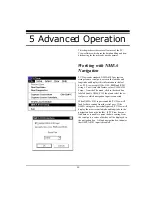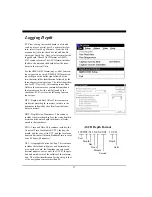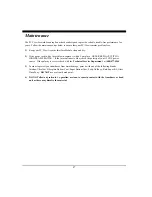
34
Adjusting the Depth
Tracker
With every down-looking ping, the
Depth Tracker
attempts to find the bottom. The depth that is found
is displayed in the toolbar as well as the depth win-
dow if it is open (see p.22 for a discussion of the
depth display). If the depth tracker cannot find the
bottom, a question mark will be displayed in the
toolbar. The tracked depth can be saved to a file and
sent out over a serial port. Refer to Chapter 5 for a
discussion of this utility.
If Auto Range is on, PC/View will use the tracked
depth to adjust the range (see p.30 for a description
of Auto Range). If the depth tracker cannot find the
bottom, Auto Range will step through the available
range scales until the bottom is found. To adjust the
parameters used by the depth tracker, select
Depth
Tracker...
from the Setup menu.
Surface Masking
The
Surface Masking
feature allows you to specify a
range near the water surface in which the depth
tracker will ignore any incoming returns. The de-
fault Surface Masking is
off
.
Surface Masking is useful if there is a strong surface
return, abundant floating debris, bubbles under the
hull or surface bait schools. With blanking off in
such situations, the depth tracker could mistake these
shallow returns for the bottom.
The maximum masking range is about 10 feet, 3 me-
ters, or 1.6 fathoms. Use the slide bar to select the
masking range. The selected masking range is
shown in all display windows.
Threshold
To avoid errant depth tracking on noise and sus-
pended features, the depth tracker applies a
Thresh-
old
.
Normal
is the default setting which should be
used in most situations.
However, if the gain is set so that the screen is dark,
revealing only obstacles and very bright mid-water
NOTE
Depth Tracker settings always return to
the defaults when you exit PC/View.
Содержание PC/View
Страница 1: ...INTERPHASE INTERPHASE PC VIEW for Windows OPERATION MANUAL...
Страница 54: ...54 W Warranty 6 7 55 Z Zoom 33...
Страница 56: ...56...







































